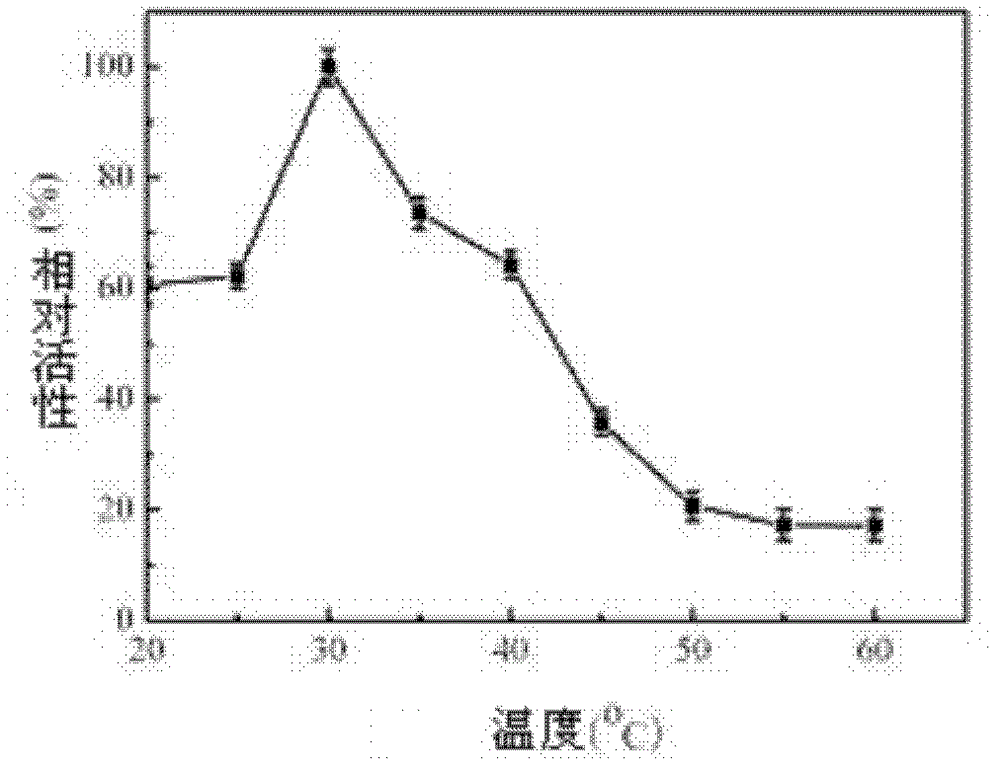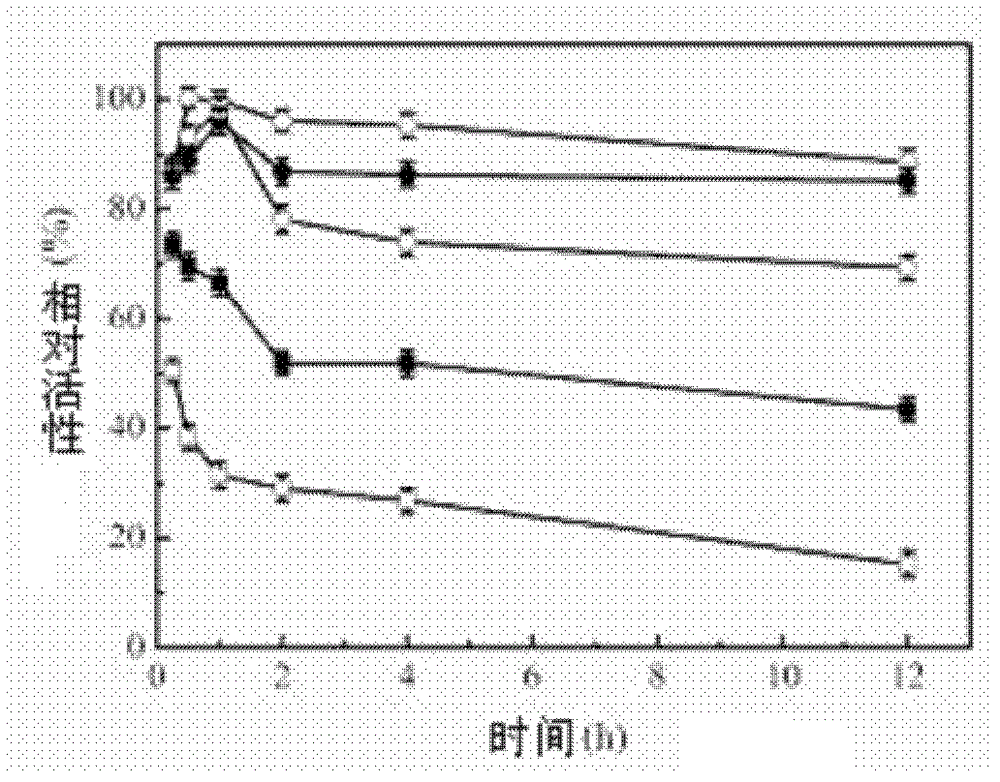Novel tannase and application thereof
A kind of tannase, a new type of technology, applied in the field of genetic engineering
- Summary
- Abstract
- Description
- Claims
- Application Information
AI Technical Summary
Problems solved by technology
Method used
Image
Examples
Embodiment 1
[0033] Example 1 Establishment of metagenomic library and acquisition of positive clones, gene cloning and expression
[0034] 1. Genomic DNA extraction
[0035] (1) Get 4g of seabed mud sample and put it into a 50ml sterile centrifuge tube;
[0036] (2) Add 13.5ml DNA extraction solution buffer, shake at 37°C, 220r / min for 30min;
[0037] (3) Add 1.5ml 20% SDS;
[0038] (4) 65°C water bath for 2 hours, during which time the centrifuge tube was gently inverted several times every 20 minutes, and mixed;
[0039] (5) Centrifuge at 6000×g for 10 minutes at 4°C;
[0040] (6) Take the supernatant, add an equal volume of chloroform, and gently invert several times up and down;
[0041] (7) Centrifuge at 16000×g for 10 minutes at 4°C;
[0042] (8) Repeat (6), (7) steps twice;
[0043](9) Take the supernatant, add 0.6v of isopropanol, mix gently, and place at room temperature for 1-2h;
[0044] (10) Centrifuge at 16000×g for 20 minutes at 4°C;
[0045] (11) Wash twice with 75%...
Embodiment 2
[0067] The enzymatic property research of embodiment 2 recombinant tannase Tan410
[0068] Take 200 μL of crude enzyme solution, add 200 μL of 15 mM propyl gallate, 37 ° C, water bath for 5 min, then add 200 μ L of methanol tannin (0.667%), 37 ° C for 5 min, add 200 μ L of KOH (0.5 M), 37 ° C for 5 min At the same time, the inactivated crude enzyme solution was used as a control, and the light absorption value was measured at 520nm. The greater the absorption value, the higher the enzyme activity.
[0069] 1. Optimum reaction temperature and thermal stability of recombinant tannase Tan410
[0070] Under the condition of reaction temperature of 20-60° C., the enzyme activity was measured according to the above method, and the optimum reaction temperature was obtained (recorded as 100% when the enzyme activity was the highest). The enzyme was incubated at 25°C, 35°C, 45°C, 50°C, and 55°C for 0.25h, 0.5h, 1h, 2h, 4h, and 12h respectively, and the remaining enzyme activity was me...
Embodiment 3
[0080] Example 3 Effect of recombinant tannase Tan410 on degradation of propyl gallate, tannic acid, epicatechin gallate, epigallocatechin ester, chlorogenic acid, rosmarinic acid and ethyl ferulic acid HPLC analysis
[0081] Take 6 2ml centrifuge tubes, add 200 μL of enzyme solution, and then add 0.5 mg / mL of 200 μL methyl gallate, tannic acid, epicatechin gallate, epigallocatechin gallate, Chlorogenic acid, rosmarinic acid and ethyl ferulic acid were placed at 30°C for 40 minutes and then analyzed by HPLC.
[0082] The chromatographic conditions are: Diamonsil C18 chromatographic column (250×4.6mm, 5μm), column temperature 30°C, the ultraviolet detection wavelength of gallic acid is 260nm, and the ultraviolet detection wavelength of ferulic acid and caffeic acid is 320nm. The injection volume was 0.5 μL, and the peak area was quantified by the external standard method.
[0083] Mobile phase A: acetonitrile B: pH 3.5 phosphate buffered saline solution, A:B=60:40, flow rate ...
PUM
 Login to View More
Login to View More Abstract
Description
Claims
Application Information
 Login to View More
Login to View More - R&D
- Intellectual Property
- Life Sciences
- Materials
- Tech Scout
- Unparalleled Data Quality
- Higher Quality Content
- 60% Fewer Hallucinations
Browse by: Latest US Patents, China's latest patents, Technical Efficacy Thesaurus, Application Domain, Technology Topic, Popular Technical Reports.
© 2025 PatSnap. All rights reserved.Legal|Privacy policy|Modern Slavery Act Transparency Statement|Sitemap|About US| Contact US: help@patsnap.com



